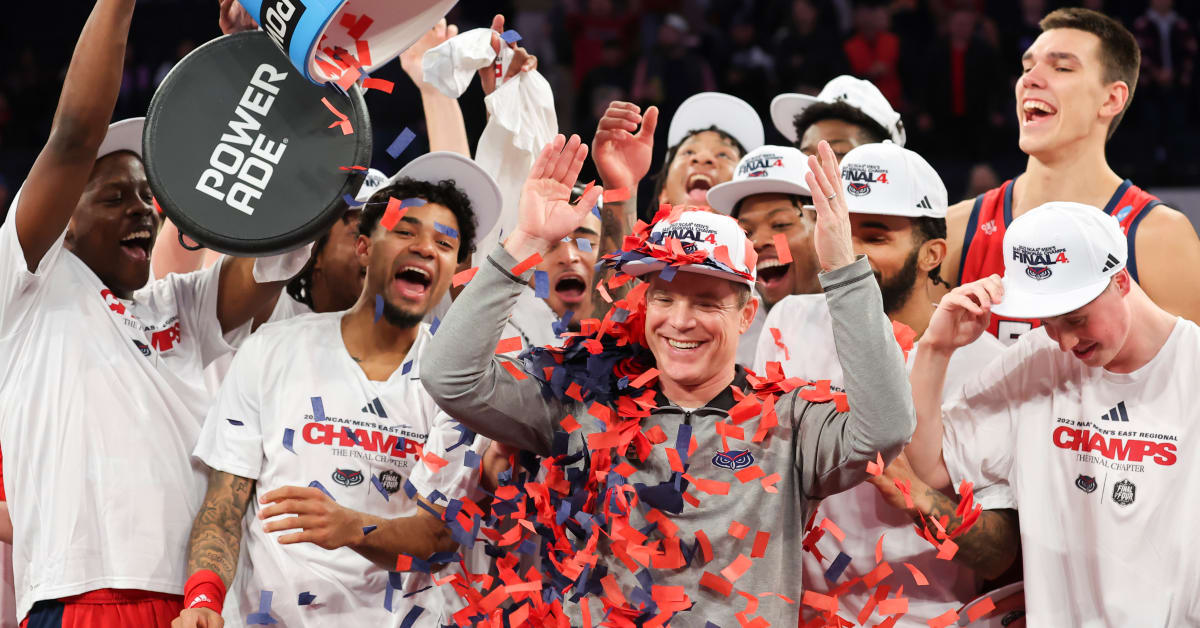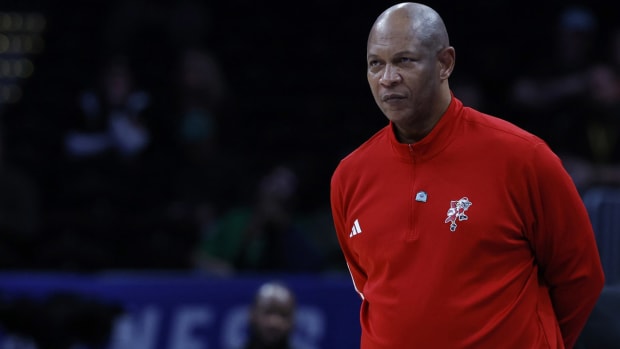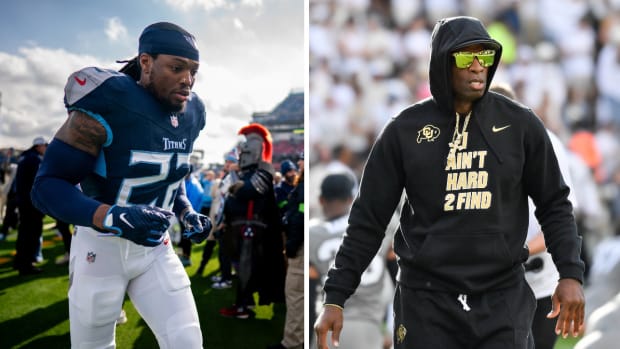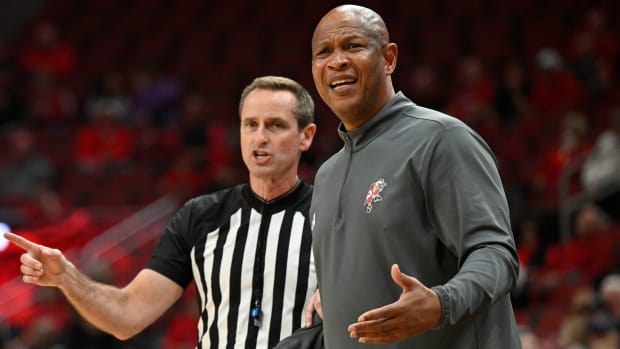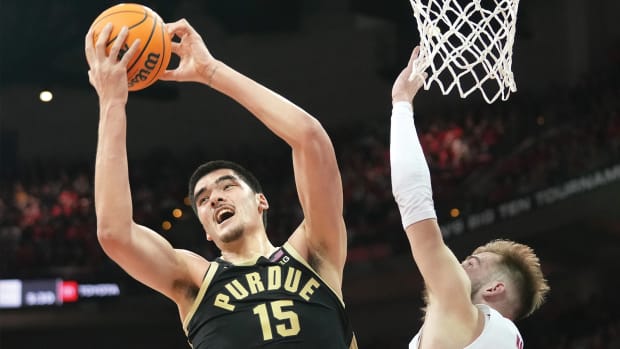FAU’s March Madness Run Leads to Owls’ First NIL Collective
Chuck Toman doesn’t have a lot of free time.
While helping his wife raise three children, Toman is an orthopedic surgeon who sees upward of 50 clients per day. On a recent day, he performed eight surgeries. He’s up late, and he’s up early.
There is little time to, say, run a name, image and likeness collective for his hometown college, the Florida Atlantic Owls. And yet, after a conversation last fall with FAU athletic director Brian White, that’s exactly what’s now happened.
“I said, ‘Brian, I want to donate to the university,’” Toman recalls. “He said, ‘What I really need is a collective.’ I said, ‘What the hell is a collective?’”
A few months later, Paradise Collective is up, running and flourishing. Amid their March Madness run, the Owls have gone from having no collective—a rarity even for a mid-major program—to a collective that has raised thousands. In their first week of fundraising efforts, Toman and friend Kevin Koscso have raised $65,000 with a goal of reaching $100,000 by the weekend.

Coach Dusty May and the Owls will make their first Final Four appearance on Saturday.
Brad Penner/USA Today Sports
“It’s crazy,” Toman says. “We are riding the wave.”
In Year 2 of the NIL era, it’s a window into the value of a Cinderella in March.
“It’s huge,” says White, who is in his fifth year as AD. “Astronomical.”
FAU (35–3) meets San Diego State (31–6) on Saturday with a chance to advance to the men’s national championship game. In one of the most shocking men’s Final Fours in NCAA history—for the first time, no one-, two- or three-seeds advanced—the glass slipper belongs to the No. 9 Owls.
The spoils of this remarkable journey are a novel concept in such a new world: cash for the athletes. The prizes are no longer relegated to just fat bonuses for coaches, a surge of donations to the athletic department and an influx of applications to the university.
The players will, at least eventually, see money in their hands.
Toman and Koscso have spent the past couple of months developing the framework for their group through conversations with other school collectives. They have also met with new football coach Tom Herman and the basketball staff. Their model will be similar to the one used in many other college towns. Athletes will earn compensation for performing community service for local charities.
They’ve applied for 501(c)(3) status for the nonprofit entity of the Paradise Collective, the Paradise One Fund. They haven’t determined when they’ll begin distributing the money, Koscso says. They know that time is of the essence—in an interview last week, basketball coach Dusty May said other programs were offering overtures to many of his current players.
“We want them to stay,” says Koscso, an endodontist and father of three. “There’s been a lot of talk and conversations and offers already from other teams.”
Like many programs at the lower level of Division I, FAU got a late start in the NIL game. Just look at their fellow participants in the Final Four. Behind billionaire businessman John Ruiz, Miami’s basketball team is reportedly earning more than $2 million in NIL. San Diego State, a mid-major like FAU, is leagues ahead of the Owls, too. The Aztecs’ collective, MESA Foundation, distributes $2,000 a month to each scholarship player and has raised more than $350,000, according to The San Diego Union-Tribune.
UConn has two collectives, Bleeding Blue for Good and D’Amelio Huskies, the latter of which was started by UConn alum Marc D’Amelio, a social media influencer who has more than 600,000 Twitter followers. His daughters, Charli and Dixie, have a combined 190 million TikTok followers.
The Final Four offers a window into the differing world of NIL collectives. The richest bluebloods of the sport, with deep-pocketed alums and bountiful resources, are positioned to dole out more than $5 million a year to their basketball and football teams. There is often a steep drop-off to the next tier of schools and an even more significant fall to the next.
Based in the beautiful and wealthy town of Boca Raton, Fla., Toman is confident in growing the collective.
“It’s a different animal than Miami. It’s fantastic [FAU has] that much support,” he says. “It’s going to be tough in the world of college sports with programs that have megadonors, but I’ve tried to encourage our local folks with the ability to do that to step up.
“In Boca Raton, we should be fantastic at this. A lot of people who make a lot of money spend a lot of time here.”
It was evident during a recent interaction at his orthopedic office, where he says one of his clients overheard a conversation about the collective and donated $10,000 right on the spot. “He just whipped out a check and handed it to me,” Toman says.
It’s not like FAU had no NIL cash beforehand. Owls players have benefited through individual deals from their run through the tournament, White says, including a student-led movement of trading cards and NFTs, as well as endorsement opportunities from local businesses. The basketball team has gone from “minimal NIL” before the season to every player having some sort of NIL success, he says.
Eventually, players will also receive money from the collective, which Toman says is imperative for the smaller programs to keep up with the big dogs.
“It’s David and Goliath, but those Davids will be destroyed because of NIL. If you want to play at the highest level, you need to offer great facilities and coaching, a beautiful place to leave and,” he pauses, “also a collective.”
